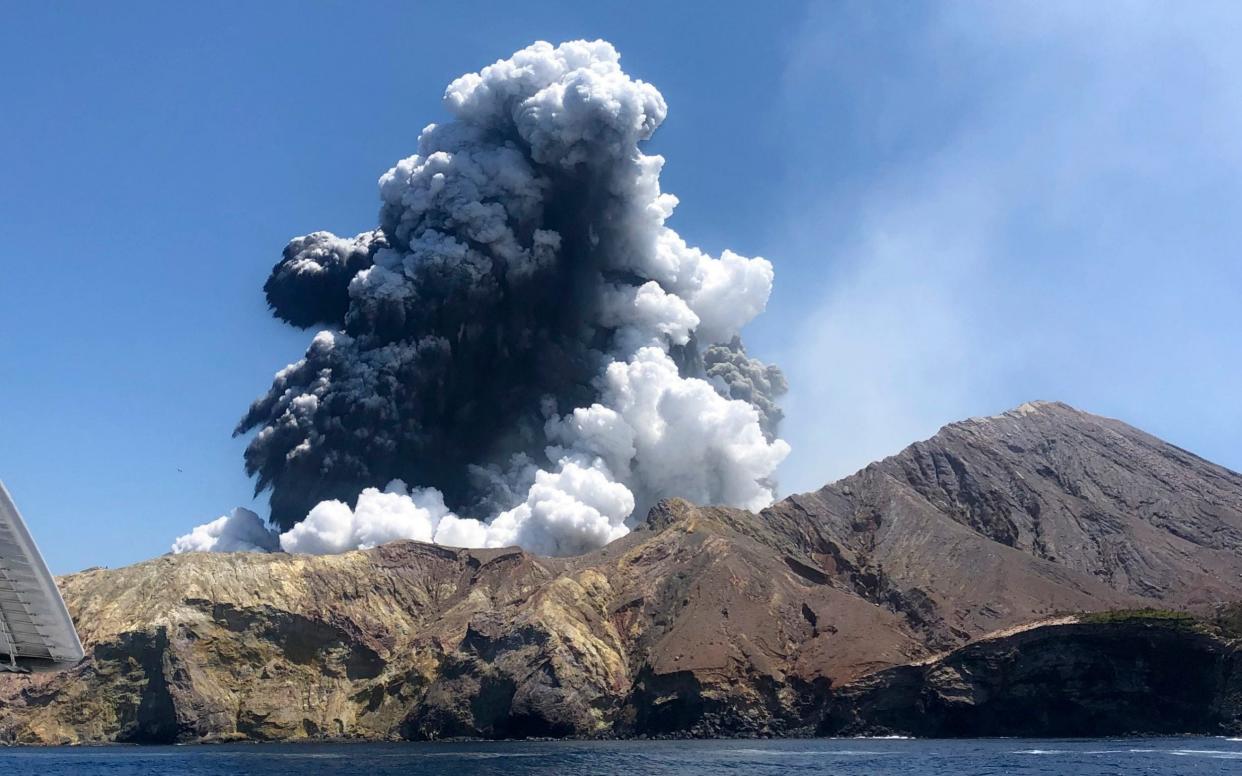Death toll rises to 8 in New Zealand volcano explosion as hospitals order in skin grafts to treat burn victims

The death toll from New Zealand's volcanic explosion has risen to eight after two more victims died from their burn-injuries in hospital, local officials confirmed on Wednesday.
New Zealand health authorities have ordered 1.2 million square cm (1291 square feet) of skin from the United States to treat patients suffering severe burns from Monday's eruption.
Dr Peter Watson from Middlemore Hospital, where the country’s National Burns Unit is located, said that in the 24 hours after the eruption the unit dealt with the workload it would normally deal with in one year.
Some patients have burns to up to 95 per cent of their bodies. Surgeons have been working around the clock on 29 patients in several burns units across the country since White Island erupted on Monday.
It is understood that two British women are among the 30 people still in hospital. Eight are still officially missing, presumed dead.
An increased risk of another eruption and extremely challenging conditions have made it too dangerous for crews to retrieve the bodies of the victims still on the island.
Dr Watson said that because of the unprecedented number of burns victims at one time and the severity of their burns from toxic volcanic gases, surgeons are working faster than usual.
He said the skin was ordered from the United States because the patients “urgently need more skin grafts”.
Twenty-two of the 30 patients remain on airway support because the gases burnt their lungs. On average, patients suffered burns to 40-50 per cent of their bodies, but some received burns to 95 per cent.
WorkSafe New Zealand has opened a health and safety investigation into the injuries and loss of life caused by the eruption.
It is understood White Island tour operators potentially fines of NZ$1.5 million if found liable under health and safety laws but it will be a long time before any prosecutions begin, if they do go ahead. A coronial investigation is also underway.
When the volcano erupted clouds of superheated volcanic gas, water vapour and rock were spewed into the air at hundreds of miles an hour. Temperatures reached up to 400C, and clouds of acidic gas and steam enveloped much of the White Island, also known as Whakaari.
The nature of the gas meant that survivors were found with third-degree burns to their skin but their clothing largely intact, and many suffered burnt lungs from inhaling the superheated gas, made up of sulphur dioxide and hydrogen chloride.
Dr Watson said the gases would have reacted with the eyes, skin and mucous membranes, causing agony to the victims.
Australian volcanologist Raymond Cas told CNN that the eruption would have sent large rocks hurtling through the air at “supersonic speeds”.
“They would have been engulfed in noxious volcanic gases,” he told CNN.
GNS Science volcanologist Gary Leonard said at a media conference Wednesday that there is a 40-60 per cent chance of another eruption at White Island on the same scale within the next 24 hours.

 Yahoo News
Yahoo News 
